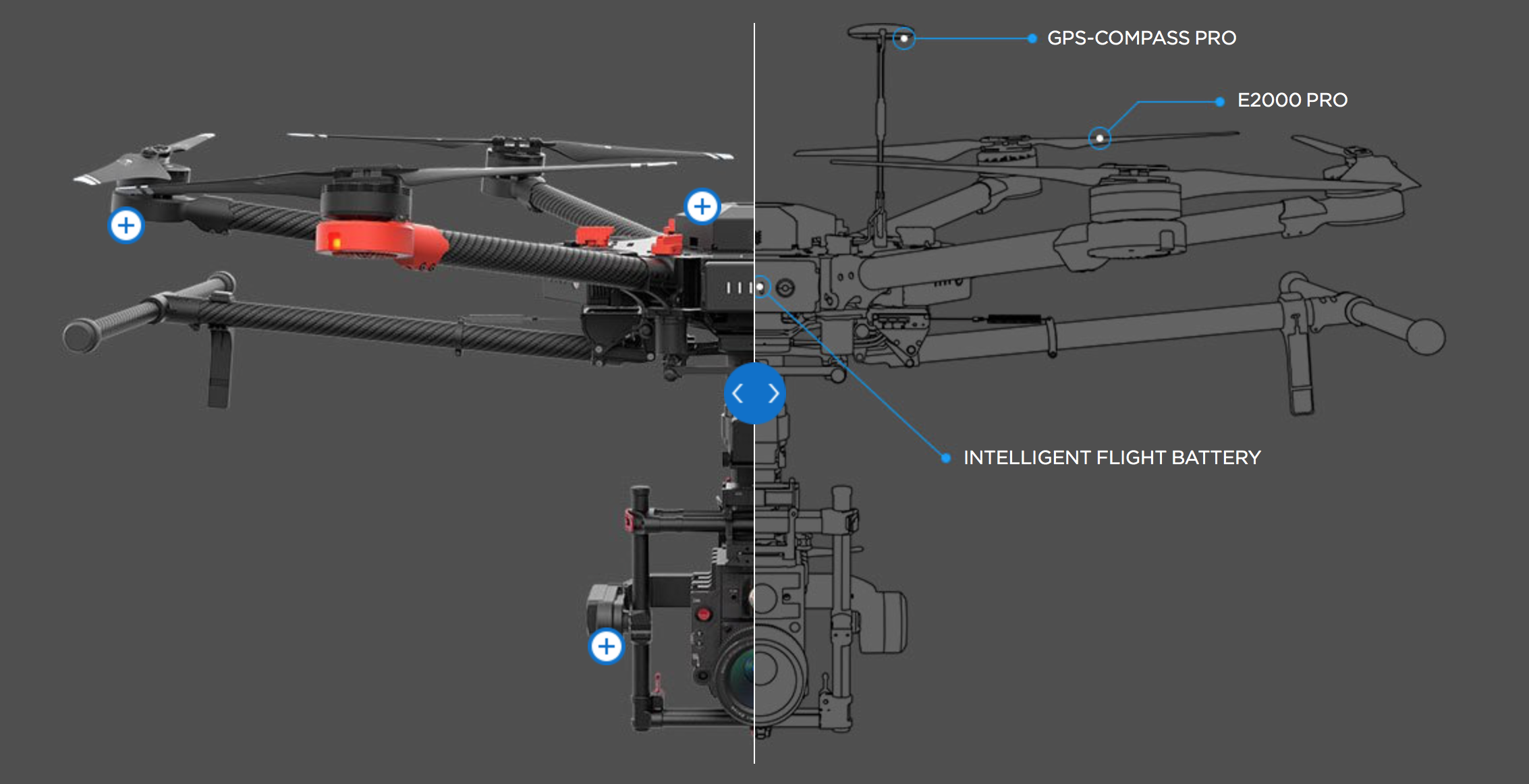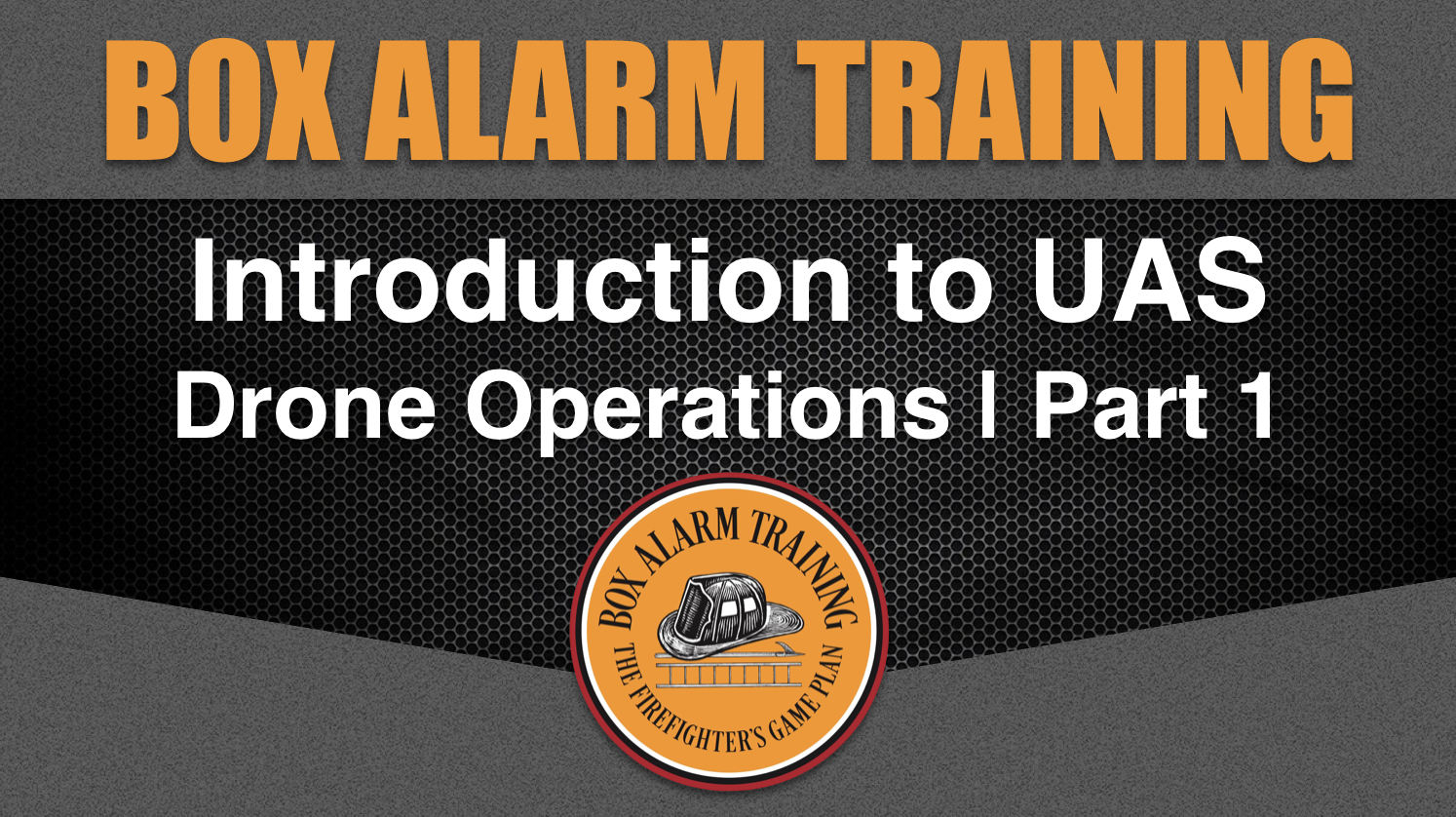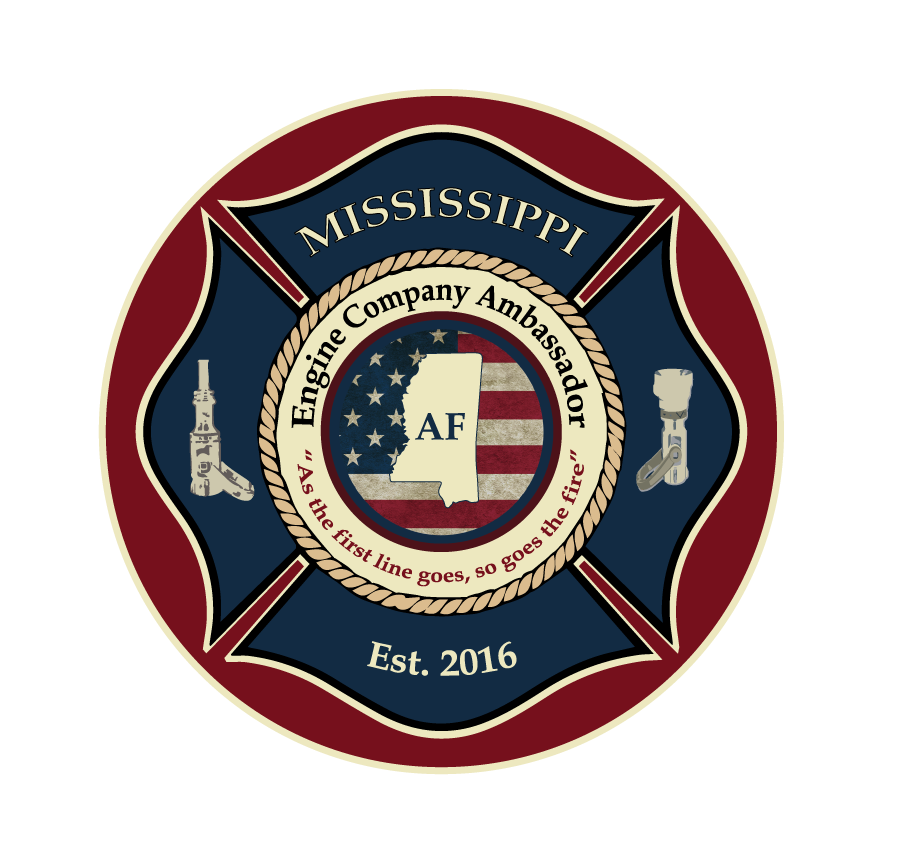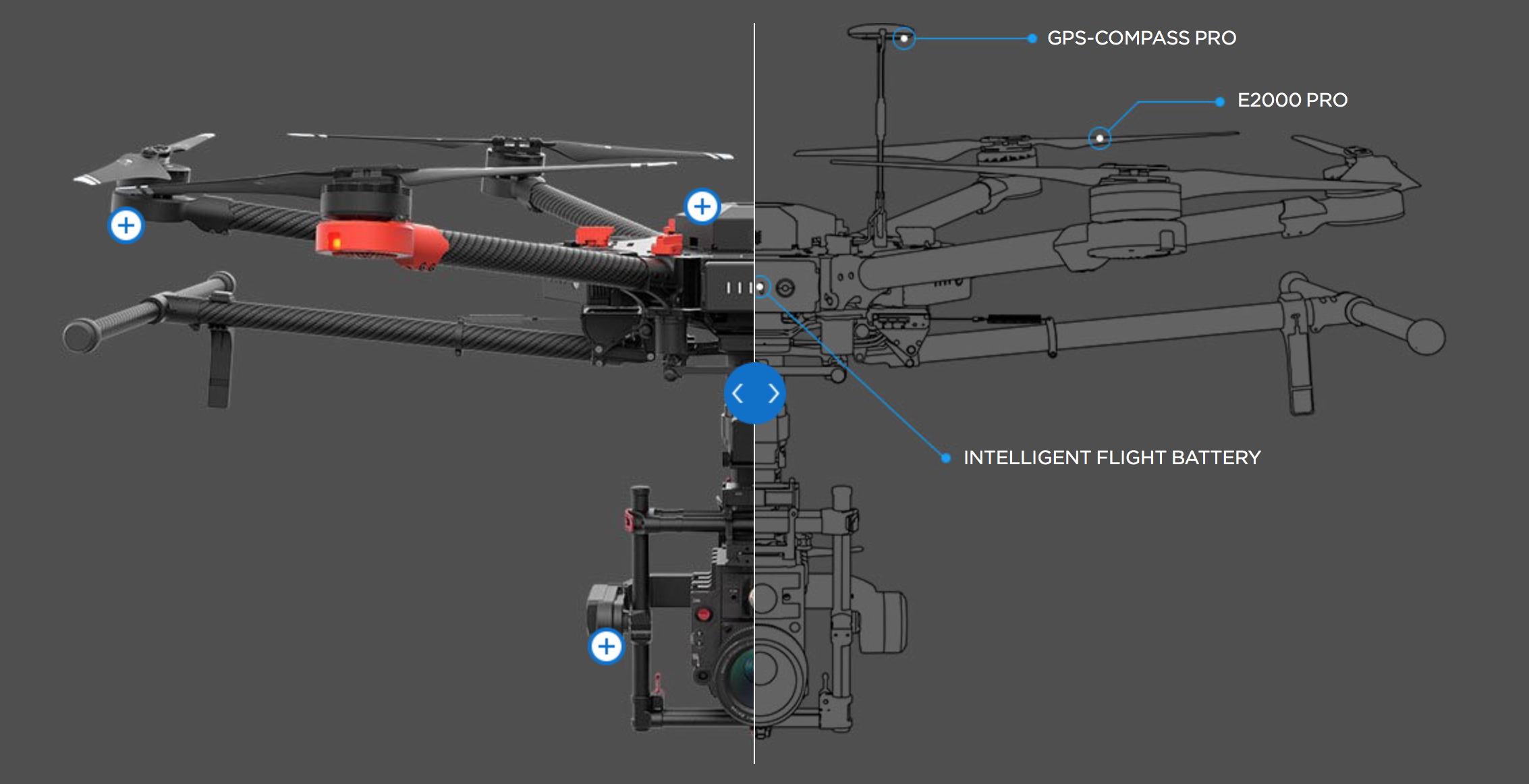During FDIC 2017 we spoke with Dennis Garrison from ezSpanner about their products and how they designed them. If you have never seen ezSpanner products they have redesigned several traditional tools we all use and made them much more user friendly. You can find out more info on their website at ezspanner.com
Gore Particulate Hood Quick Look
During FDIC 2017 we had the opportunity to take a quick look at the new Gore Particulate Hood. This is a particulate blocking hood built by W.L. Gore and Majestic Fire Apparel. Many of you have heard of each of these companies so it is no surprise to see Gore provide the particulate blocking layer to Majestic Fire Apparel to manufacture and distribute the hood. Gore has been a very well known barrier development company and Majestic Fire Apparel has been a leading manufacturer of fire service hoods for many years. In the video below Holly Blake gives us a brief overview of the new hood and how it performs.
Elkhart Brass XD Nozzles
At FDIC 2017 we met with Chris Martin from Elkhart Brass to take a look at the new XD nozzles. Elkhart has really done a good job on these nozzles listening to the feedback of firefighters and using suggestions in the design. This series from Elkhart is titled XD for a reason, it stands for extreme duty. Once you take a look at them you will realize they truly are built for work. Everything on this nozzle was considered and not just what you see in plain view. The waterway inside is also refined offering a full round ball for a smooth internal barrel. Take a look at the video below to get a nice overview of the new Elkhart XD nozzles.
Tru ID Hose with Dennis Legear
If you haven't heard of Dennis Legear or about his research from hydrants to nozzles you have to read up and watch this video. Dennis has provided the fire service with some great ideas and research and his latest project has come to fruition. Tru ID hose was a major effort by many to produce a spec of fire hose built with purpose and built to solve several critical issues. In the video below Dennis explains some of the reasoning and details behind the design and why this is important to every firefighter that rides the nozzle. If you would like to read more about his work visit his website at: www.hydrant2nozzle.com
New Box Alarm Training Website
We have a new website!
In an effort to streamline our training resources we have completely redesigned the Box Alarm Training website. The new site offers a much more organized experience.
Things to checkout in the new site:
Blog
- The blog will provide you with all of our latest training and news articles.
Webcasts
- The webcast section provides our newest videos and also an online form to submit questions for the YouTube channel webcast.
Videos
- The Videos section has been organized into playlist based on the category of training. You will be able to find training videos based on the topic you are interested in.
I hope the new design will provide a much better experience when you use the Box Alarm Training website. If you have any questions you can use our new contact page to submit your questions.
Disaster Management for the Company Officer
Disaster management can be extremely challenging for the company officer. Unfortunately I have seen my share of disasters while deploying on 5 different tornadoes responses. Early on I realized that middle management becomes a very difficult place to work because of the sheer magnitude of many of these disasters. I learned a tip awhile back that really helps with lining out the responsibilities of each crew member so that we fall in line with the National Incident Management System. When you find yourself in a disaster management situation ask yourself these questions.
What's my job?
This is the first question you should ask in order to define your role in the response.
Who do I work for?
It is very important to define who you work for or who you should report to throughout the operation. This will help disseminate information through the proper channels and reduce the duplication of effort.
Who works for me?
Things will move quickly during the initial stages of a disaster operation. Find out who will be working under you to make sure you have the ability to perform personnel accountability reports and can effectively manage those assigned to work with you.
Where do I get my stuff?
Your assignment can vary greatly and each response may require equipment that is not readily available. You need to find out where to retrieve specialized equipment and how to request additional equipment.
How long do I have?
Defining your operational period will help you understand the time incident command staff believe you should be finished with your assignment. You need to report your status through the proper chain of command and if additional time is needed let your supervisor know what is going on.
In the video below I discuss these topics and how to use the above 5 questions to help you get organized during a disaster response.
https://youtu.be/qyOOCtWqvn0
How to go to FDIC on the Cheap
How to go to FDIC on the Cheap?
 The easiest way to go to FDIC and not break the bank is to only attend the exhibits. The exhibits at FDIC are pretty incredible. It can take days just to see everything on the floor. A lot of firefighters do not see any educational value in going to see the exhibits but the reality is there are many subject matter experts at nearly every booth waiting to answer any questions you have. I highly recommend getting a group together and staying in a hotel outside the downtown area. You just commute into the downtown area each day and enjoy the show. If you see us on the floor stop and say hello.
The easiest way to go to FDIC and not break the bank is to only attend the exhibits. The exhibits at FDIC are pretty incredible. It can take days just to see everything on the floor. A lot of firefighters do not see any educational value in going to see the exhibits but the reality is there are many subject matter experts at nearly every booth waiting to answer any questions you have. I highly recommend getting a group together and staying in a hotel outside the downtown area. You just commute into the downtown area each day and enjoy the show. If you see us on the floor stop and say hello.
For registration information CLICK HERE.
You can watch the video below to learn more:
https://youtu.be/I28PRac82DQ
How to Label Sides of a Structure
Over the years we have seen several different methods of labeling sides of a structure. They range from numerical to alphabetical and even by compass heading. However, it does not matter which way you choose to label sides of a building if the companies arriving label the sides differently. If the first arriving company does not establish their location and side, the incoming companies can easily become confused and disoriented. The best practice right now is to label the sides of a structure alphabetically in a clockwise fashion. Some firefighters will tell you the Alpha side would be the address or street side and you would label the remaining sides after that determination. This can become a major problem if you arrive on scene with a building that is oddly shaped or lands in the middle of a parking lot where there is no clear "address side".
In the video below we will clarify how to properly label and identify sides of a structure. We will also show a couple of examples where labeling the side by the initial arriving company is of the utmost importance.
https://youtu.be/prvZ83ilZEg
Benefits of the Reverse Lay
Very rarely do we discuss the tactical advantages of different types of hose layouts for water supply. However, once you break down the movements and positional assignments of each type of hose lay you begin to see some advantages for different scenarios. The Reverse Lay offers several key advantages for limited manpower and residential structure fires. First let's look at the three main ways to lay out supply line.
Forward
The forward lay is very common and is typically used by the second due engine to supply the first due engine with a supply line. The second due engine stops at a nearby hydrant, drops a firefighter off to make connections and then proceeds to lay hose out to the attack engine.
Reverse Lay
The reverse lay is a popular lay in many different parts of the United States. The Reverse Lay is typically used by the second due engine to supply the first due engine with a supply line. The second due engine stops at the scene or the attack engine, drops a supply line off to make connections and then proceeds to the hydrant.
Split Lay or Blind Alley
The Split Lay is great for confined areas like long narrow driveways, alleys, tight streets with limited access and dead ends. The split lay is typically initiated by the first due engine when they recognize an access problem. The first due engine drops their supply line in an intersection or location before the confined area and then proceeds to the fire. The second due engine lays a line to the first due's supply line. This creates two different hose lays that meet in the middle. The split lay helps to keep other companies from getting jammed into a tight spot while trying to position on a fire.
In the video below we discuss the 3 different types of hose layouts but also go into more detail about the advantages the Reverse Lay has to offer.
https://youtu.be/uunsCzuSv5M
Understanding the Time-Temperature Curve
The Time-Temperature Curve is something that we have seen in textbooks for many years. Many people do not know that the original time-temperature curve dates back to around 1908. The graph depicts the stages of fire growth in time showing how temperature increases and decreases throughout the stages of development. Due to research on modern fire behavior we now use a different style time-temperature curve. The new time-temp curve shows something called ventilation limited conditions which depicts how temperature will drop due to the limited oxygen rather than the limited fuel. This is a common occurrence in modern fires due to newer construction techniques and newer products which provide much more fuel for combustion.
Take a look at the video below which will explain the differences in the two time-temp curves. We will also explain the differences between fuel limited and vent limited fires.
https://youtu.be/p6zfiDxvf6Q
Bernoulli's Principle Applied to Firefighting | Box Alarm Training
Bernoulli's Principle is not the first thing that comes to our minds when discussing firefighting tactics. However, it directly affects many of our operations. In fire behavior courses we learn about how fire will travel from areas of high pressure to areas of lower pressure. This is the basis of understanding how ventilation and flow paths work. Before we discuss Bernoulli's Principle and how it applies to our tactics let's look at a couple of fireground operations that are affected by Bernoulli's Principle.
Traditional Ventilation
You were probably taught that ventilation was the systematic removal of hot gases, smoke, etc. This definition led to a general misunderstanding of what ventilation actually does inside of a structure. Discussions in classes often communicated that ventilation cools things down and makes our operations easier. The discussion deserves a little more time in order to clarify. Modern fires are generally limited by ventilation and not fuel. This means that when we ventilate things actually heat up, they do not cool down. However, traditional ventilation still offers many advantages, like controlling the flow path or creating lift from low areas. These are often huge topics presented by firefighters because lifting gases can increase victim survivability. In general when we ventilate a structure we are creating an area of low pressure for the fire to travel to and exit. When we break a window typically the fire will move toward the window you just broke. However, if the window is broken revealing a higher pressure area outside, such as a wind driven fire, you will be opening a new inlet for air to move into the structure. This can cause the fire to travel to another outlet and in many cases creates a very dangerous environment for crews working inside of the structure.
Positive Pressure Ventilation (PPA)
Positive Pressure Ventilation attempts to create a significantly higher pressure area inside the structure than outside of the structure. This will force fire and gases out of the structure as they seek areas of lower pressure. This can also create problems by forcefully pushing gases and fire into void spaces that are difficult to detect. Many departments all over the United States use positive pressure successfully but these departments also understand some of the concerns with using positive pressure. Once a fire leaves a confined area, such as a bedroom, positive pressure can create a chase for the fire attack team. The fire will rapidly seek low pressure and can outrun an interior fire attack crew very quickly.
Nozzle Operations
When we use our nozzle we are not only flowing water, we are flowing air. This air can create areas of higher pressure just like positive pressure fans and cause fire to travel towards areas of lower pressure. A nozzle can very quickly over pressurize a room causing the exhaust to push back on the fire attack team.
Bernoulli's Principle
Bernoulli's Principle states "an increase in the velocity of a stream of fluid results in a decrease in pressure". Water flowing from a nozzle will create an area of low pressure and draw even more air into the area you are directing the stream. This is significant when fighting fires in under ventilated spaces or flowing water into a structure from the exterior.
In the video below we will discuss Bernoulli's Principle and how it relates to fire attack concepts.
https://youtu.be/zk6CsoUqERU
Drones for the Fire Service | Part 2 and 3 | Getting Started
Drones are growing increasingly popular as tools for firefighters and emergency responders. Getting started into drone operations can be very difficult without the guidance of someone who knows the process. This new technology grabs the attention of many of us in the field and we immediately see all the ways we could start using them. However, within a couple hours of shopping for the latest and greatest drone, our dreams are shattered by rules and regulations set forth by the Federal Aviation Administration (FAA). I have personally experienced these processes and I believe I can help you move in the right direction. My initial reactions to the FAA rules and regulations were negative. I had a hard time understanding how a kid could receive a drone as a birthday present and fly it that afternoon but we couldn't perform search and rescue operations with the exact same drone. While I still have my opinions about certain operations, I understand why the FAA created these regulations and how important they are in order to integrate drones into the National Airspace System (NAS).
In the two videos below I will cover the two primary routes to take when establishing a fire service drone program. These two routes both allow you to fly for many emergency operations and each has it's own advantages and disadvantages. The first is Part 107 which is the commercial drone operations certificate. This certificate allows you to perform many different operations but requires you to take and pass the Part 107 exam. The second method is to apply for a Public Certificate of Authorization (COA) which will allow your fire department to operate a drone for public operations.
Part 107 Getting Started
https://youtu.be/k0Ueso2CYi4
Public COA Getting Started
https://youtu.be/PsQH9NWx3So
Preparing to Teach as a New Instructor | Box Alarm Training
You find yourself as a new instructor trying to deliver training at the fire house. This is not an easy task when you are first getting started. Many new instructors have a good idea about the topic they want to cover or the techniques they want to teach but lack a good plan to deliver the material so that the firefighters understand. If we walk into a training session unprepared our fellow firefighters will see it from a mile away. In order to help out new instructors we put together a short video discussing some basic teaching principles. Something a good friend of mine taught me years ago was a very simple structure for delivering instruction:
- Tell them what you are about to tell them
- Tell them
- Tell them what you told them
This is very basic concept and forces your instruction to have a beginning, middle and an end. However, we can take this a step further and look at a four step teaching method below:
TELL = Explain Theory
SHOW = Demonstrate Skills
DO = Practice those Skills
APPLY = Provide a practical application and assessment method for the skills taught
Personally I believe all instructors should explain the "why's" first. This provides firefighters with a reason for understanding the upcoming concepts or skills. Once we have given our firefighters a reason for training it will be much easier to provide the solutions or skills that address the "why's".
In the video below I will cover these basic instructional processes.
https://youtu.be/cKrXqwzYKWM
Introduction to Drone Operations
Drone operations have gained a lot of popularity in the last few years for firefighters and emergency responders. They offer tremendous value for search and rescue operations, hazardous materials responses, and even structural firefighting. In this Introduction to Drone Operations we will go over the three primary categories of flying a drone. These categories are provided by the FAA and define the flight you will be conducting. We will also go over the registration process so you can get your drone properly registered.
Categories of Flight
In order to conduct drone operations you need to define your flight operations. The most common categories of flights for drones are listed below:
- Recreational
- Commercial
- Public
In the video below we explain these categories of flight and how they are defined.
Register Your Drone
Any drone that is between .55 pounds and 55 pounds must be registered with the FAA. If you are considering performing commercial operations or public operations you must register the drone as a commercial drone. You cannot commercially or publicly operate a drone with a recreational registration number. I explain more in the video below. You can CLICK HERE to go to the registration site for your drone.
https://youtu.be/jB7JLivZ0_w
Determining Flow Through Nozzle Reaction
Determining Flow Through Nozzle Reaction
Recently I completed my first year of the Executive Fire Officer Program at the National Fire Academy. If you are unfamiliar with the EFO program you must submit an Applied Research Project (ARP) for each year during the process. I wanted my ARP to identify a unique problem that really hasn't been discussed much in order to provide the fire service with some new information regarding the way we train firefighters to operate the nozzle during interior fire attack operations.
During my time as a firefighter and instructor I have noticed very few firefighters actually pay attention to the amount of water they are delivering at the nozzle. They just take it for granted that the water leaving the nozzle is what it is "supposed to be". During early stages of Driver Operator training we learn about friction loss and proper pump discharge pressure in order to achieve the proper nozzle pressure which in turn delivers the target flow we need. However, no one really discusses what happens at the nozzle and whether or not the firefighter can actually feel the difference in flow to know if something isn't operating correctly. We tend to look at nozzle reaction as a theoretical math problem instead of a tool we could use to identify problems that occur on the fire-ground.
The first step involved in this research process was to determine if there actually is a problem. A problem with curriculum, training, or even drills that have left the firefighter unprepared. My first ARP was to identify this problem so that in subsequent ARPs I could address solutions to this problem. However, I have tested some solutions and we are already seeing a trend which I believe can better prepare interior firefighters.
In the first ARP I tested an NFPA 1001-I-II class in their final week of training to see if they were able to identify critical reductions in flow. The results showed that 46% of the students were unable to detect a 25% reduction in flow using nozzle reaction. This test reduced a 125gpm @ 100psi nozzle by 25% simulating a 180 degree kink which could occur on the fire-ground. This 25% reduction drops the flow of the nozzle to around 94gpm which is below the recommended flow rate in NFPA 1710.
I believe my results show that we could do more to train firefighters working on the nozzle to identify potential problems. That being said we performed the same test to a group of students that just finished a week long advanced Engine Company Operations course and we found that 90% of our students detected a 10% reduction in flow. These firefighters received training in several nozzle operation techniques and performed a very high number of repetitions throughout their week of training. The feedback we received from the course was very positive and the firefighters that participated felt like they truly refined their skill sets.
I have provided a short video discussing these results and some recommendations I have for training your firefighters to identify critical reductions in flow. If you would like to read the full ARP you can CLICK HERE to read all of the details.
Updates and Upcoming Videos | Box Alarm Training
This is a quick video providing some updates for upcoming videos and our new webcast introduction. The webcast will invite guest instructors and manufacturers via video chat to answer questions, share new products, and generate discussion. If you have questions about certain topics please write a comment below and let us know so we can try to answer your questions. https://youtu.be/NZ-k0dTIoL0
What's to Come? | Box Alarm Training 2017
Updates
It has been quite some time since I focused attention on producing more content for this website and our YouTube channel. I wanted to let everyone know what the plans will be in the near future and some of the ideas I am working on to provide more content on a consistent basis.
 Upcoming Video Series
Upcoming Video Series
I am working on an entire video series regarding UAS (Drone) operations for Public Safety. I recently received a Part 107 Certificate from the FAA along with our agency receiving a Public COA which allows you to operate publicly. This has been a pretty confusing subject area for many of us trying to develop programs and utilize these specialized pieces of equipment.
 Broadcast Style Segments
Broadcast Style Segments
I have considered for several years hosting a news style YouTube broadcast which would invite guests onto the show for online question and answer sessions, new product releases, etc. If this is something you would enjoy seeing please let me know and I will continue with plans to make it happen.
Upcoming Reviews and Topics
There is a very high probability you will see some new product reviews from several products I have used including: MSA G1 SCBA with Thermal Imager, The Rescue Wedge, Bullard LDX Thermal Imager, Majestic Gloves, Structural Boots (Globe/Cosmos), and USAR Boots (HAIX).
Also, I am looking at several topics to cover including: The National Fire Academy, Executive Fire Officer, Social Media, Radio Communications while using an SCBA, Natural Disaster Responses and Preparation,
HALO Hood by Majestic Fire Apparel | Box Alarm Training
The HALO Hood is a new firefighting hood designed by Majestic Fire Apparel. The HALO Hood stemmed from recent research on the prevalence of cancer among firefighters. Typical hoods offer limited protection from particle infiltration which results in particles making their way through your hood and onto your skin where absorption can take place. The HALO Hood has a built in particle barrier in key places throughout the hood. The hood features panels of protection placed in key areas in order to create a balance of comfort and protection. This hood offers significant levels of thermal protection, higher than most hoods on the market. You can view the detailed TPP ratings from the Majestic Fire Apparel website. Check out our video below to see the review. You can also visit www.majhoods.com for more information.
HALO Hood Review Video
https://www.youtube.com/watch?v=qct2N9VPlsg
Petzl - FDIC 2016
I have always enjoyed working with Petzl products and their representatives are always very good rope rescue professionals. The guys at Petzl were nice enough to let us film a live broadcast on Periscope to check out some of their new products. This is a recording of the broadcast for you to check out. We also shot a quick clip of the new Petzl Rescucender which is a great new design. You can see both videos below: https://www.youtube.com/watch?v=5RVtcoHKYuE
https://www.youtube.com/watch?v=dnd2zUtHZWM
Scott Sight - FDIC 2016
Scott released it's newest innovation at FDIC 2016, the Scott Sight. We had a great opportunity to check out this brand new device and from what we have seen so far the future of thermal imaging is very bright. Immediately the very first question firefighters ask is "How much does it cost?" knowing that this technology must be out of reach. However, Scott shocked most firefighters when they announced the list price on the entire system (Mask and Imager) would be around $1,875. They were selling the Scott Sight system, as a show special, at FDIC for less than $1000. We were very fortunate to meet with a very well educated representative from Scott who explained many intricate details behind the product's success. I wanted to break down a few of the key discussion points to help all of you find the answers to the questions you may have. We have provided two videos for you to check out below followed by our breakdown of the key questions.
The Scott Sight
https://www.youtube.com/watch?v=r4Y-furscmY
Our live Periscope Broadcast from FDIC 2016
https://www.youtube.com/watch?v=JqqrQsaVQ8o
How much does it weigh?
The Scott Sight reportedly weighs just 4 ounces. When we think about the weight of accessories on the face piece we generally do not want any extra weight than necessary. This system is very light considering the value of having an in-mask thermal imaging system. You also have to realize the imager itself rides just in front of your ear. This places the imager in a really good center of gravity point and does not feel like it pulls the face piece down like some of the other accessories.
How good is the image?
The image is surprisingly good considering how small the display actually is. We were told the system actually delivers an image that represents a distance of about 12 feet away. So, you would think that firefighters wearing glasses may struggle seeing the image when they actually can see the image fairly clearly because the focal point is so far away. The display itself rides on a hinge system just above the nose cone and is adjustable up and down using a small tool. This lets you line the display up to each firefighter's personal preference.
What kind of batteries does it use?
Right now the system uses standard AAA batteries but I could see this turning into a rechargeable system in the future. We were told they were seeing close to 4 hour run times during FDIC.
How do you clean the Scott Sight?
The entire system can be dunked into a cleaning solution. However, you can actually remove the entire camera from the mask if you want to perform a better cleaning job. The lens is held in with a removable bezel which can be removed to clean the lens if you have trouble getting debris out of the small opening.
What information is on the display?
Right now you can see standard information like air and battery levels. This system could be used to send a lot more information in the future. Just think about information we can already gather like accountability info or breathing rates, etc. Basically any data we can obtain could be pushed to the face piece in the future. This opens the door to many interesting concepts.
All in all this is a really exciting system and I look forward to seeing what is in store for the future.
















